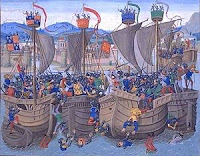
One of the core beliefs that inhabit organisations is that problems will be solved by the adoption of a whizzy new process. It’s simple, attractive… and almost always WRONG.
At one stage, a major multinational client adopted a “funnels and gates” approach to managing innovation projects. This was imported from flavour-of-the-month academics at Harvard Business School. The company was reorganised in line with the new process and training programmes were implemented at major expense worldwide.
I remember, shortly after the start of that voyage, having a meeting with the senior manager responsible for implementation of the programme, and endeavouring to surface with him some of the cultural issues that seemed to me to lie behind their difficulties with innovation.
“Don’t worry about all that,” he told me. “This new process will solve all those problems.” Of course, it didn’t. And the cultural issues remained as critical roadblocks. So innovation performance remained, at best, static.
At a general level, another Harvard Business School professor, psychoanalyst Abraham Zaleznik, addresses the problem head-on. He observes that management’s obsession with impersonal processes distorts reality, and that “depersonalised relationships” become the heart of “management mystique”, with the result that “you tend to lose sight of what you are doing”.


















